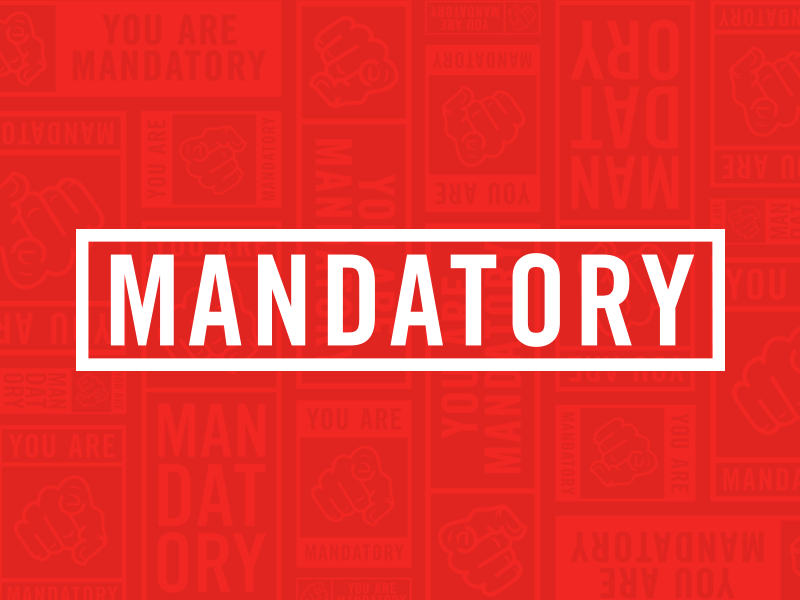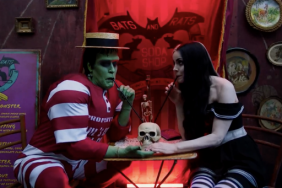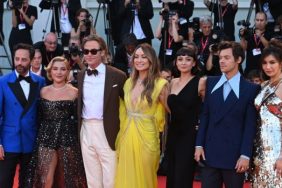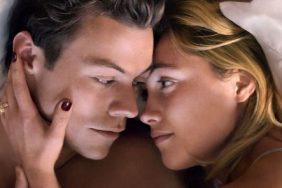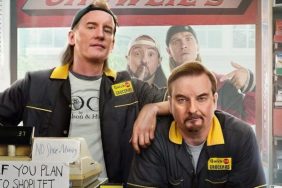Film connoisseurs will get their stockings stuffed this holiday season when Quentin Tarantino’s The Hateful Eight arrives in theaters on December 25. The writer/director’s output has been consistently captivating since 1992. Even though a ticket to the filmmaker’s latest release should be easier to snag than The Force Awakens, it will be no less coveted by many of us. So as we wait anxiously for Tarantino’s latest to bow, let’s rank his filmography to date.
#9 – Four Rooms (1995)

Critics were not kind to Four Rooms, the 1995 anthology of four stories taking place at one downtrodden Los Angeles hotel on New Years Eve featuring Tim Roth as one hapless bellboy who gets involuntarily caught up in each of them. Tarantino’s effort concludes the film, and while it by no means saves it, it is the most compelling of the quartet. A riff off a classic Alfred Hitchcock Presents TV episode where a gutsy man is willing to potentially have a finger chopped off in order to win a car, the segment is not so heavy on Tarantino’s revered style as it is Tarantino himself, whose role takes up most of its screen time and dialogue. His Room still wouldn’t garner many positive Yelp reviews, but it does deliver a sharp, satisfying punchline to an otherwise forgettable film.
#8 – Jackie Brown (1997)

Based on author Elmore Leonard’s bestseller Rum Punch, the story has all the trappings of a Tarantino film: likable criminals, bad guys with crackling dialogue, and lawmen who can only try to keep up. Jackie Brown is a favorite among Tarantino fans, but not us here. Sure we’ve got great performances by great actors — including the resurrection of Pam Grier and Robert Forrester — in an homage to 1970’s Blaxploitation films but there are few surprises along the way, including a contrived, chemistry-less attraction between the two aforementioned actors. Leonard is a lauded, influential author but this adaptation falls into one of his familiar traps: a colorful quandary is thrown the protagonist’s way which she proceeds to resolve colorlessly and sweat-free.
#7 – Kill Bill Vol. 2 (2004)

But it’s got The Bride’s backstory! And the fateful reunion between her and Bill! For those reasons and others, many would argue this finale to Tarantino’s two part martial arts extravaganza should have a higher rank on this list and supercede its predecessor for sure. We find it hard though to reward its over-talkiness, slow motion flashbacks, and glacially paced climax. Daryl Hannah steals this show, and had there be more of her inspired wickedness maybe Vol. 2’s placement could have increased. Instead that time is given to acting legend David Carradine to talk and talk and talk and talk and talk and…
#6 – Death Proof (2007)

Part of a 2007 science experiment of sorts, this is the second film in a double feature paired alongside another fellow daredevil filmmaker, Robert Rodriquez, and released together as Grindhouse. Both are tributes to the bygone era of cheaply made and sold exploitation films loaded with sex, violence, and bizarre subject matter. Death Proof itself is basically two films in one: the first an introduction to villain, Stuntman Mike, and a passel of frolicking females unaware they’ve already become his prey. The second follows another group of ladies who might look like victims to Mike but to his surprise prove to be anything but. Grindhouse did poorly in theaters and Tarantino himself conceded that Death Proof may turn out to be his worst film ever. Though its first half too slowly builds to a gruesome conclusion, the second culminates in a sky-high octane, edge-of-your seat car chase that could be one of the best ever put to film.
#5 – Django Unchained (2012)

Now we’ve turned the corner to Tarantino’s masterpieces. A hopeless devotion to film seems to course through the maestro’s veins, and with Django Unchained he sets his sights of one of its most cherished genres, the Western — and its equally esteemed subgenre, the Spaghetti Western. Revenge is a common theme that sprouts up in most of Tarantino’s films and in Django it rears its head deliciously during the brutal, antebellum era of the Deep South. A white bounty hunter mentors a freed black slave into his profession where the latter himself begins to showcase uncanny abilities as a gunslinger. When the duo decide to rescue the slave’s plantation-bound wife the results are explosive, literally and figuratively. A constant visual reminder throughout that Tarantino, as a writer/director, operates on a level reserved for only a select few.
#4 – Kill Bill Vol. 1 (2003)

In Kill Bill Vol. 1, revenge is meted out mercilessly with knives, razor blades, doors, mouths, and one glorious sword. Again, Vol. 2 seems to get all the props but to us, Vol. 1 comes first. Uma Thurman shined so brightly in Pulp Fiction that Tarantino gave her two movies in one to carry all on her own, and as a reignited assassin who’d been crossed by her squad and left for dead, she lights up the sky. Her Bride is one badass martial artist who, with cunning and agility, slashes through her individual adversaries as effectively as she does a mob full of masked henchmen.
#3 – Reservoir Dogs (1992)

It may be surprising that one of the greatest movies ever made would rank number 3 on our list, but when it comes to quality and substance, Tarantino’s work exists in some kind of alternate universe. The writer/director’s first film, it would have hit movie audiences like a ton of bricks when it was released in 1992, had there been actual audiences. Instead there were the steady echoes of Sundance’s ovations and a rabid, universal discovery on home video. Here the colors Blonde, Pink, Brown, White, Blue, and Orange collide with black, more white, and splatters of red to paint perhaps cinema’s greatest achievement in independent film. A breakthrough, a style marker, and the world’s introduction to an artist who would teach us that movies’ best days were in no way behind us.
#2 – Inglourious Basterds (2009)

Though the influence of the Spaghetti Western is on full display in Django Unchained, traces of it could be first found here, despite being a cinematic Adolf Hitler revenge fantasy set in 1944 France. Tarantino is often criticized for the slow pacing in his films, but in Basterds that pace can also be defined as taut, masterful storytelling reminiscent of a Sergio Leone classic’s most breathtaking moments. The movie poster may put Brad Pitt front and center, but it is Christoph Waltz, as an insidious Nazi colonel, whose performance leads the film into something way, way beyond the perishable whatnot usually clogging up multiplexes. And as for Tarantino himself, this film truly showcases how he, right before our eyes, has become our greatest living director whose new work continues to be just as fresh, innovative, surprising, and exciting as his earlier works.
#1 – Pulp Fiction (1994)

A landmark film in every respect. Cunning, cool, brash, subversive, sublimely scattered, funny and bloody as hell. Early ’90s cinema, still slightly hungover from the sugar rush of the ’80s movie, needed a grand influence, and in Pulp Fiction it got it. It relaunched John Travolta’s career. It made Samuel L. Jackson a god. Uma Thurman single-handedly returned the cinematic portrayal of the femme fatale back to the pedestal on which it belonged. It made people wonder if Bruce Willis wasn’t in a particular movie, was that movie really even worth seeing? Quentin Tarantino hit a home run with Reservoir Dogs, which might naturally psyche out any writer/director’s follow-up effort. But Quentin Tarantino is not just any writer/director and his Pulp Fiction was by all accounts a grand slam. A film for the ages, and out of a phenomenal body of work all listed above, his very best.
